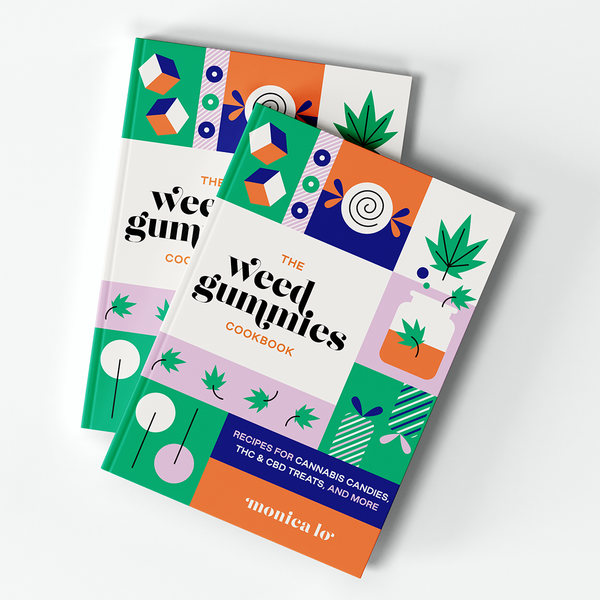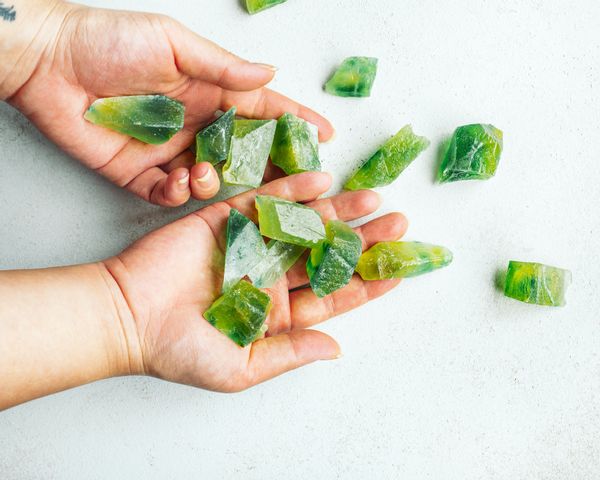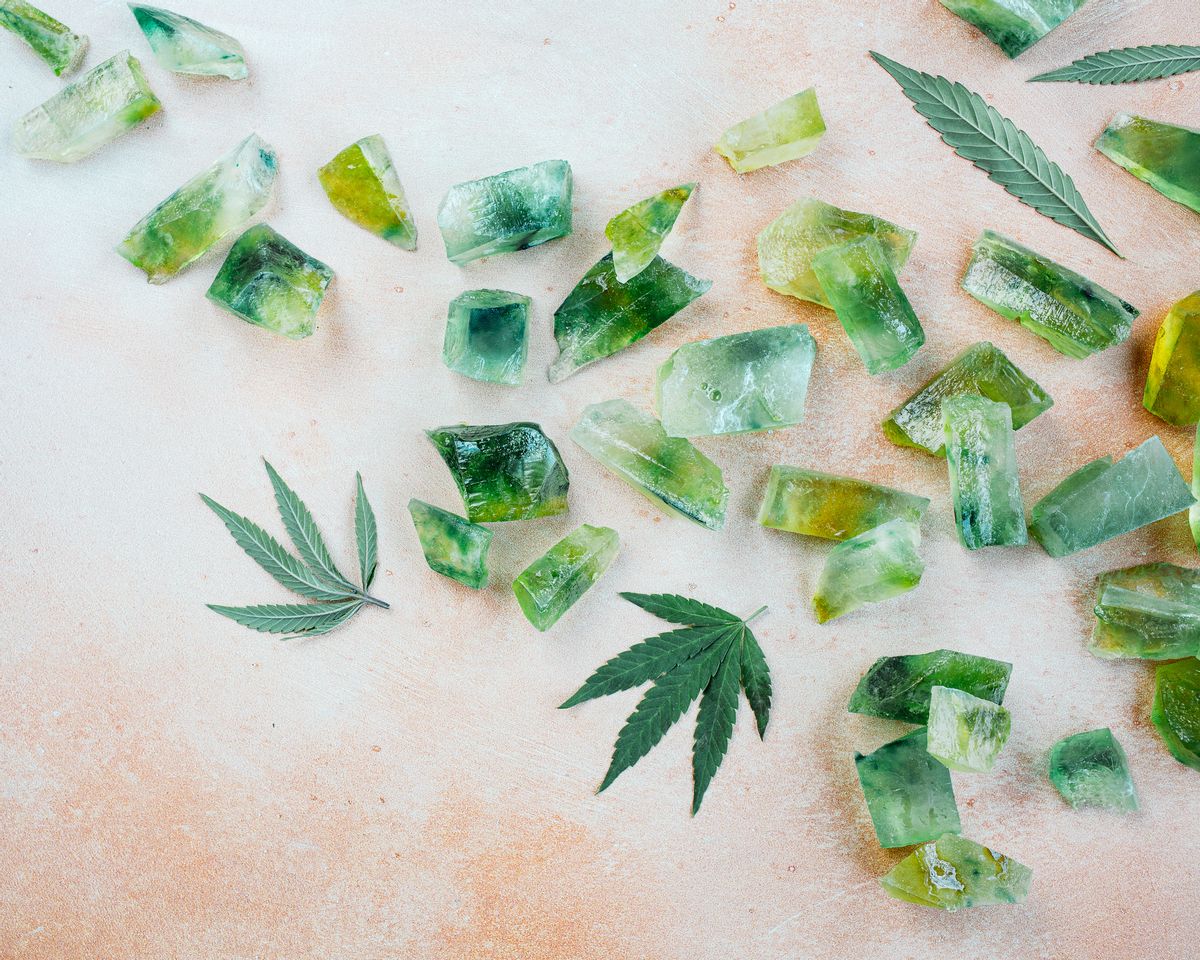After Monica Lo experienced a herniated disc, her doctor attempted to prescribe a cocktail of painkillers and opioids, in which she had no interest. Lo was on the hunt for natural alternatives when her roommate gave her a cannabis-infused treat.
"For the first time in a long time, I slept like a baby," Lo said. "The next day, I found myself spending hours upon hours researching this plant and how to make my own infusions. Since we lived in a strict no-smoking building, I needed to be very discreet with the wafting scent of cannabis; this meant that using a Crock-Pot or cooking on the stovetop was not in the cards."
At the time, Lo was a creative director at a sous vide start-up and thought she'd put the company's machines to the test, which ultimately inspired her to start her educational blog Sous Weed. Now, she's sharing her culinary creations in "The Weed Gummies Cookbook: Recipes for Cannabis Candies, THC and CBD Edibles, and More," which came out in August.
This practical collection of recipes is accessible to both edible newbies, as well as longtime pros who are looking for different ways to experiment with flavor and texture. The recipes include Mocha Caramels, Sour Green Apple Gummies, Lavender Chamomile Sleep Gummies, Honey Elderberry Lozenges and much more.
Lo spoke with Salon Food about the importance of diverse representation in the world of culinary cannabis, how her Taiwanese-American background informed some of her flavor and the benefits of making your own edibles at home.
Tell me a little bit about the importance of BIPOC representation in the world of cannabis, especially amid increasingly recreational legalization across the country.
Lo: As an Asian-American woman, I didn't feel like I was accurately represented in the mainstream media. And, in general, there's not enough positive BIPOC representation in the cannabis space. Asian-Americans face unique issues when it comes to cannabis use and acceptance due to differences in culture and social stigmas. I most definitely did not fit into the "lazy stoner" stereotype, and I wasn't posting photos of boobs, butts and bongs. On the contrary, the goal with my food and lifestyle photography was geared towards changing the general public perception on cannabis. I wanted to be a responsible face for cannabis users, to educate and to help dispel myths and stigmas around this beneficial plant.
Want more great food writing and recipes? Subscribe to Salon Food's newsletter, The Bite.
I have designed my blog, Sous Weed, and "The Weed Gummies Cookbook" to be as user-friendly as possible in hopes of empowering readers to make their own cannabis edibles at home. Both are written through the lens of a Taiwanese-American woman. My book also offers educational resources on childproofing, safety labeling, as well as encouraging readers to shop responsibly and support BIPOC cannabis brands and organizations.
It's so important for us to understand the history of cannabis, not just the origins, but also how communities of color in the U.S. have been disproportionately harmed by the failed War on Drugs. There are too many people still incarcerated for nonviolent cannabis offenses, and I hope to help by donating a portion of the profits of "The Weed Gummies Cookbook" semiannually to The Last Prisoner Project to support criminal justice reform and drug policy reform.
 The "Weed Gummies Cookbook" by Monica Lo (Monica Lo)In what ways did your Taiwanese-American background inform the types of flavors you wanted to explore in your gummies?
The "Weed Gummies Cookbook" by Monica Lo (Monica Lo)In what ways did your Taiwanese-American background inform the types of flavors you wanted to explore in your gummies?
Lo: "The Weed Gummies Cookbook" is my first solo book, and I wanted to showcase all the flavors that define me. The Terrazzo Coffee Jelly, made with agar agar, pays homage to the version my mom used to make for potluck parties. The Snowflake Crisp Nougats are candies that originated in Taiwan, often eaten during Lunar New Year. The Chocolate Turtles instantly bring me back to my childhood growing up in Texas. The combination of chocolate, caramel and pecans feels so Southern to me.
What would you say to home cooks who may be intimidated by attempting to make edibles at home?
Lo: If you're dipping your toes in, the easiest way to infuse cannabis is to make a simple alcohol-based tincture, which doesn't require any special tools. You can then use that tincture to make infused sugar for your gummies and candies. Safety and responsible consumption is very important to me. If you're concerned about dosages, the recipes in the book are designed to be low-dose and snackable. Once you are comfortable with cannabis cooking, you can add more cannabis flower or use a more potent strain in your infusions.
 Gemstone gummies (Monica Lo)
Gemstone gummies (Monica Lo)
I noticed that you organized your recipes by texture, which I thought was really smart for a book like this. How did you come to that decision?
Lo: Thank you. I wanted to go beyond just gummies with this cookbook and cover a variety of different confections. To do so, I organized the book by gummies, soft caramels and nougats, hard and brittle and sugar alternatives. The gummy section covers various gelling agents like gelatin, agar agar, pectin and tapioca starch. The techniques get a bit more challenging as you progress through the book. Working with sugar is a science. Once you're in the soft caramels and hard candies sections, you'll need special equipment like a candy thermometer in order to be successful.
What are some of the advantages of making your own edibles at home?
Lo: It's far more cost effective to make your own infusions and treats at home, especially as dispensary prices are on the rise due to a variety of reasons from taxes to operating costs.
Dispensary edibles often have preservatives to extend their shelf life, but when you DIY, you can make your edibles without the commercial preservatives and also customize the dosage to your body's needs.
Finally, you can get strain-specific or cannabinoid-specific and cook with your favorite flower. Plus, they make for great gifts during the holiday season.
If you enjoyed this interview, check out Monica Lo's "The Weed Gummies Cookbook: Recipes for Cannabis Candies, THC and CBD Edibles, and More," which was released by Ulysses Press in August.



Shares